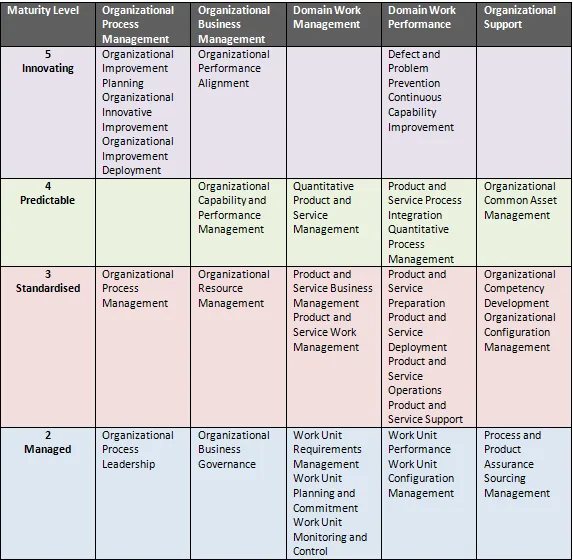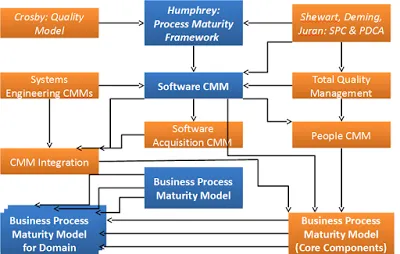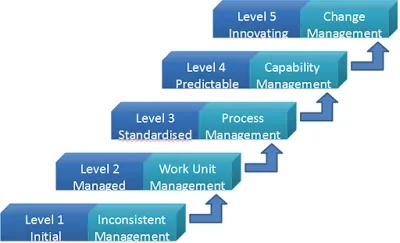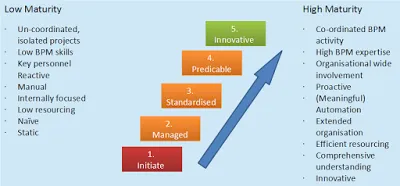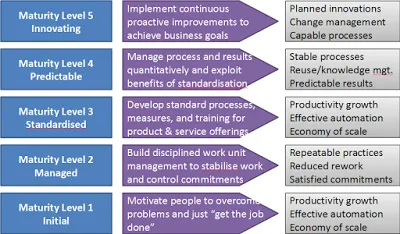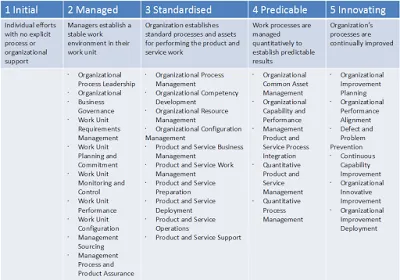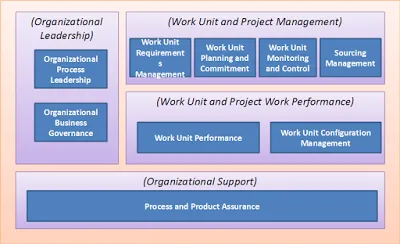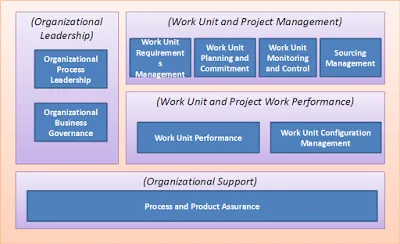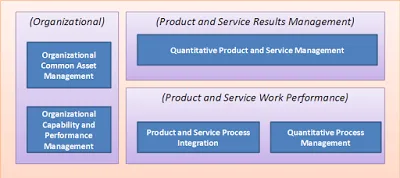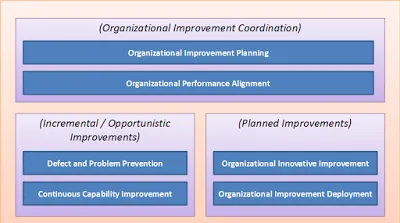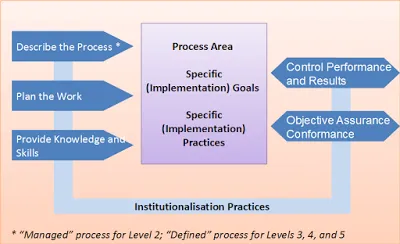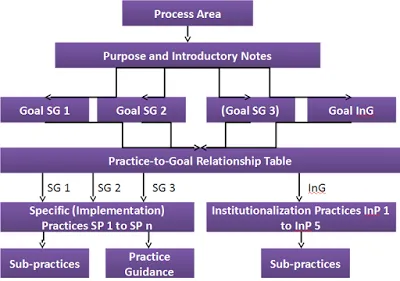Business Process Maturity Model
Blog: Biz-Performance, David Brown
Business Process Maturity Model
Symptoms of Process Problems
- Managers and staff who are overworked due to poor estimating and planning,
- Excessive rework,
- Lack of consistent, stable processes, often with multiple ways to do similar things,
- Lack of basis for measurement and management by fact,
- Lack of foundation for organisation-wide approaches and solutions,
- Disappointing results from automation,
- Mixed results in implementing programs such as Six Sigma and Business Process Reengineering / Imprvement,
- Process improvements and fixes that are too localized and sub-optimal from an overall business perspective.
Genealogy of the BPMM
The foundation principles
- Attributes of a process can be evaluated to determine its capability to contribute to organizational objectives.
- Capable processes cannot survive unless the organization is mature enough to sustain them.
- Process improvement is best approached as an organizational change program that stages the improvements to achieve successively more predictable states of organizational capability.
- Each stage or maturity level lays a required foundation on which future improvements can be built.
The Five Maturity Levels of Process Maturity
Comparison of Low and High Maturity
The BPMM Maturity Levels - How They Work
Maturity Levels
Level 1: Initial — wherein business processes are performed in inconsistent sometimes ad hoc ways with results that are difficult to predict.Level 2: Managed — wherein management stabilizes the work within local work units to ensure that it can be performed in a repeatable way that satisfies the workgroup’s primary commitments. However, work units performing similar tasks may use different procedures.
Level 3: Standardized — wherein common, standard processes are synthesized from best practices identified in the work groups and tailoring guidelines are provided for supporting different business needs. Standard processes provide an economy of scale and a foundation for learning from common
Conformance is evaluated using the following forms of evidence
- Review of artifacts that are produced by performing a process.
- Review of artifacts that support performing a process.
- Interviews with individuals or groups who perform a process.
- Interviews with individuals who manage or oversee the performance of a process.
- Interviews with individuals who support the performance of the process.
- Quantitative data used to characterize the state of the organization or the attitudes and behaviors of those in it.
- Quantitative data describing the performance of a process, its outcomes, and business results.
- Conformance.
Four Types of Appraisals
- Starter Appraisal
- Progress Appraisal
- Supplier Appraisal
- Confirmation Appraisal
Levels are specified using the following structure
- Process Area name
- Purpose statement
- Specific Goals
- Institutionalization Goals
- Practice to Goal Relational Table
- Specific Practices
- Institutionalization Practices
Maturity Levels, Focus & Process Areas
Maturity Level 2 — Managed
Maturity Level 3 — Standardized
Maturity Level 4 — Predictable
Maturity Level 5 — Innovating
Institutionalisation Goals
The BPMM Process Area Components
The BPMM Process Area Threads
